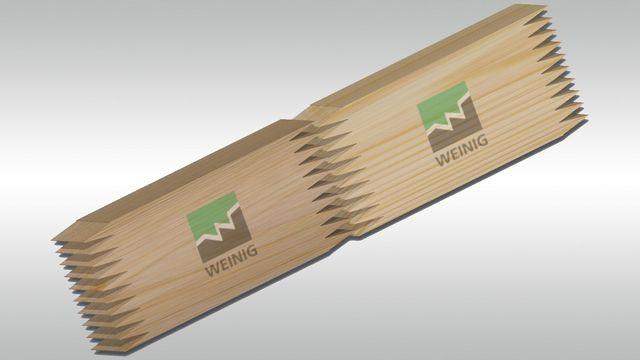Vertical jointThe vertical or on-end joint is a kind of finger jointing connection (seekeilzinkenverbindung). For the vertical joint, the zinc profile is milled parallel to the narrow side of the workpiece. Thus, the zigzag profile is visible in the area. ApplicationProvided it has not to be omitted for aesthetic reasons, it is jointed vertically when using package plants (Paketanlagen). For compact systems the vertical joint is used when the router head is arranged horizontally and the workpieces is transported flat through the machine. Advantages
Disadvantages
VersionsOne version is the Trapezzinkung (trapeze joint). This is usually used for almost square workpieces when a more pleasing appearance is desired and half cut tines should be avoided. Here, a horizontal joint would not be beneficial for optical reasons, since the profile would still be clearly visible on one side of the workpiece. Furthermore, versions with different tine lengths and angles exist. However, these are rarely found since supporting finger jointing connections are standardized nationally and on an European level. Image source: Dirk Bartens |
CNC machining centres, robots894
Edgebanding, edge processing622
Saws, cutting machines436
Planers, 4-sided moulders190
Routers, shapers, tenoners, profilers181
Drilling, mortising machines134
Presses, clamps, joining machines202
Sanding machines324
Mechanisation, storage, packing technology197
Surface coating149
Production lines125
Heating, drying, waste chopping63
Dust extraction, compressed air, vacuum139
Assembly, worktables15
Lathes29
Tools, sharpening technology99
Equipment, Other machines124


